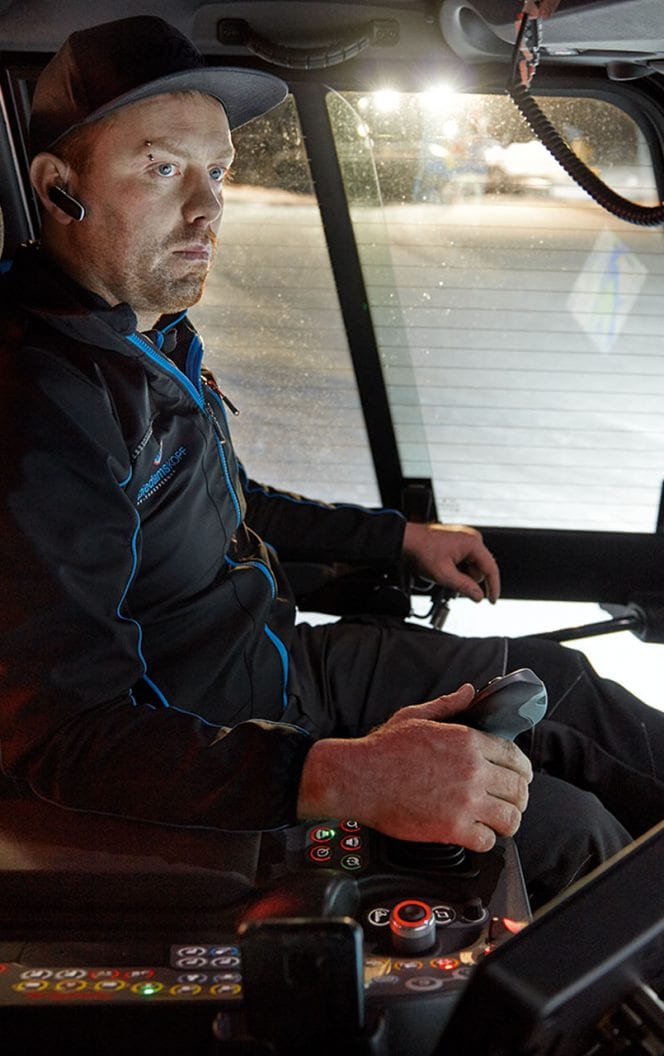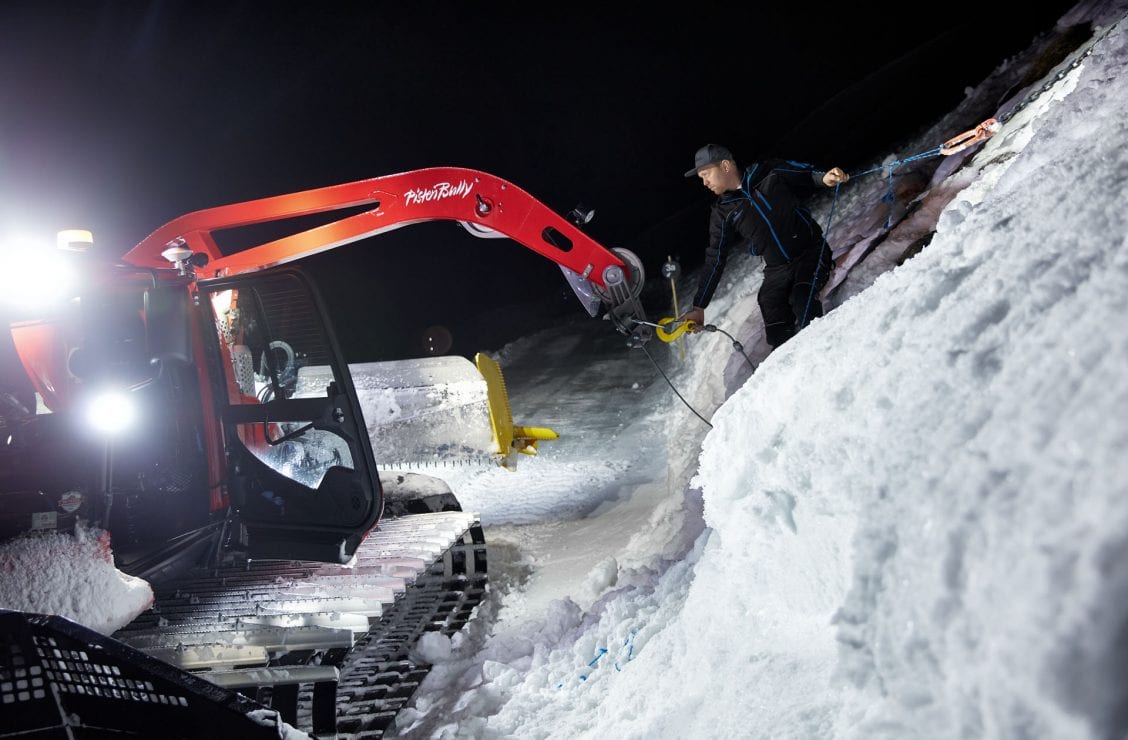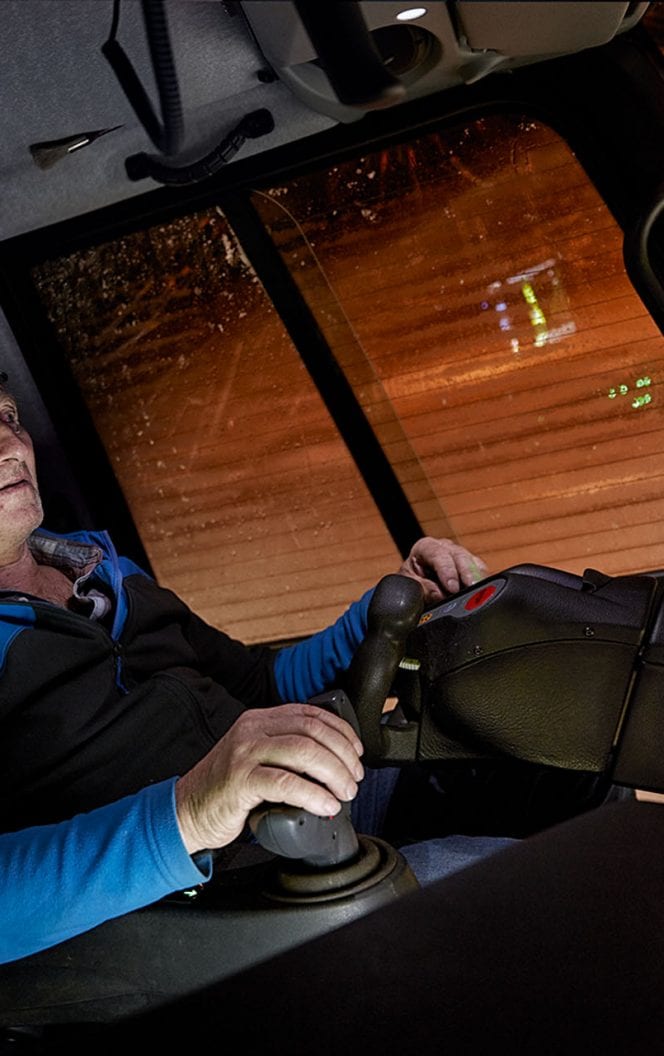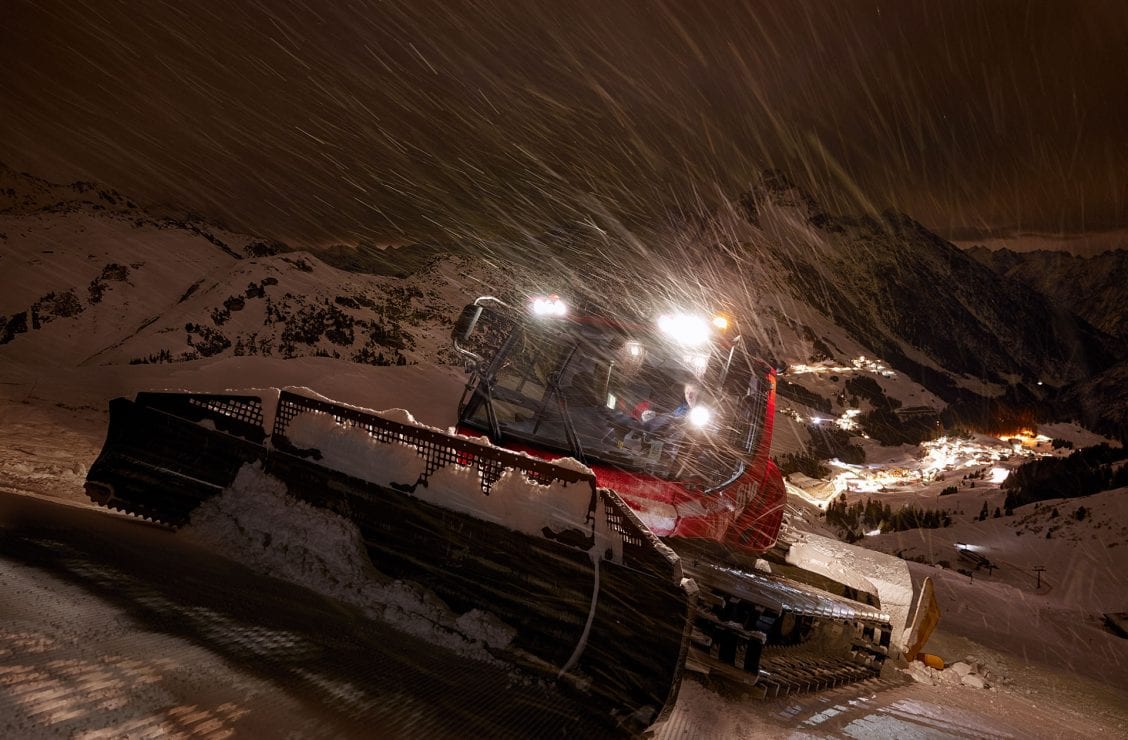The very last skier has vacated the slopes, the final snowboarder of the day has unbuckled her board, and the silence on the ski slopes in Damüls-Mellau is total. The now abandoned slopes are decorated in criss-cross tracks, evidence of every turn and every edge that has left its mark over the course of the day. And then, as if on queue, the silence is broken by the rumbling of an approaching snow groomer.
Herbert Rüf has come to tidy up his pistes, to straighten his hills, to cover over the tracks. And when his work is done, he’ll leave behind immaculate, perfectly even, corrugated bliss for tomorrow’s skiers and snowboarders to enjoy.
Anchored above the “Hahnenkopf” slope in Damüls-Mellau
Herbert Rüf has worked as a snow groomer operator for 38 winter seasons. In summer, the seasoned Alpine dairyman lives on his Alpine pasture with his wife Barbara and their many goats, calves and cows. In the shadow of the Sunnegg chairlift, during winter Rüf patrols the “Hahnenkopf,” a slope so difficult it might as well be rated dark black. With a gradient of up to seventy percent, it’s one of the ski resort’s steepest slopes. So that he can trust in his equipment in this extreme terrain, he thoroughly inspects his snow groomer before every shift. He checks to make sure his winch cable is still intact and inspects the hydraulic system to ensure everything is in working order. Then and only then does his evening truly begin.
He first ascends the slope at a leisurely pace along the flat alternate routes. Once at the very top, he attaches his winch cable to an anchor that sticks out of the snow in the middle of the slope. He then sets up a flashing light as a warning. After all, the steel cable is virtually invisible in the gathering darkness and can pose a serious hazard to night-time ski tourers. With the winch attached and the light flashing, he descends over the edge and down the slope.
“When conditions are really icy, the weight of the entire snow groomer hangs on the winch,” explains Rüf making his way down while attached to the anchor point. Not to worry, however: The entire operation isn’t particularly dangerous, he insists. Once at the bottom of the slope, he readies himself and his equipment to push the snow back up hill, returning it “back into place” with the three-part blade. As a final step, the snow groomer leaves behind fine, regular corrugations in the snow’s glistening surface.
Changeable conditions are one of the many challenges of working in the snow. Powder snow, for example, is the easiest to handle while wet snow requires a herculean effort to manoeuvre. Although skiers and snowboarders zip downhill in virtually any weather conditions, the weather forecast dictates whether the snow is groomed in the morning or the evening: “If it snows overnight, we have to prepare the slopes for the following morning. If conditions remain stable, we can do our work the evening before so that the slope can harden overnight,” explains the Bregenzerwald native.
After work on the first slope is complete, it’s time for dinner. The snow-groomer drivers mingle with the guests of the Damüls-Mellau ski resort for an hour or so. Afterwards, they groom the slopes until they are picture perfect. Typically these labours last until two in the morning, which is no problem for Rüf: “I don’t mind working nights because it allows me to be home during the day. Such a schedule has its advantages too.”












